From Red Dragon to Nemesis
Innovations in East India Company Shipping
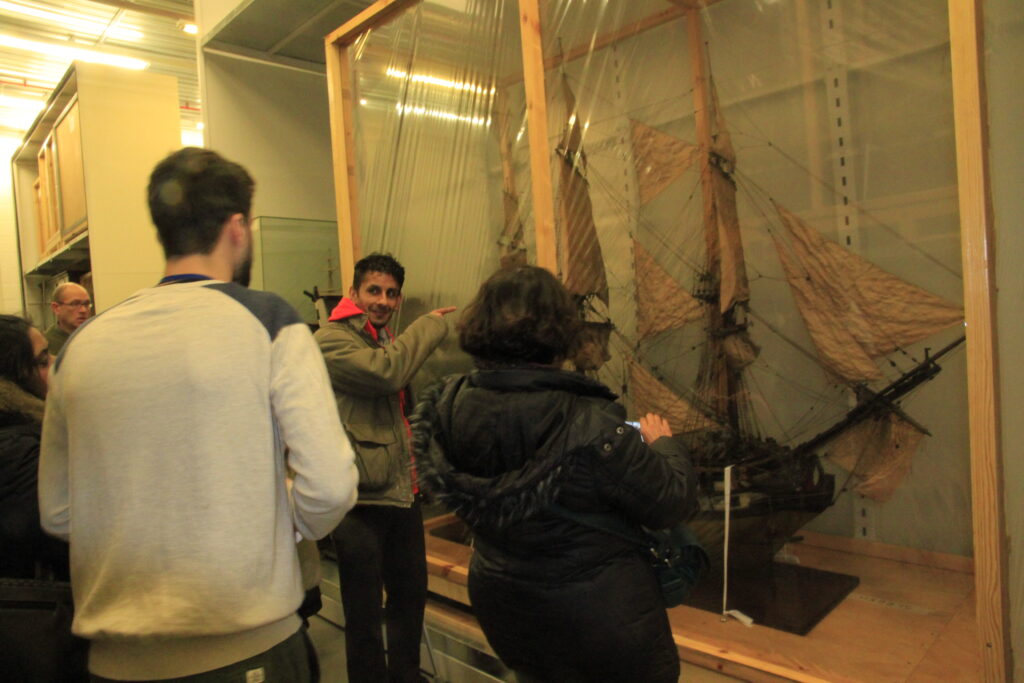
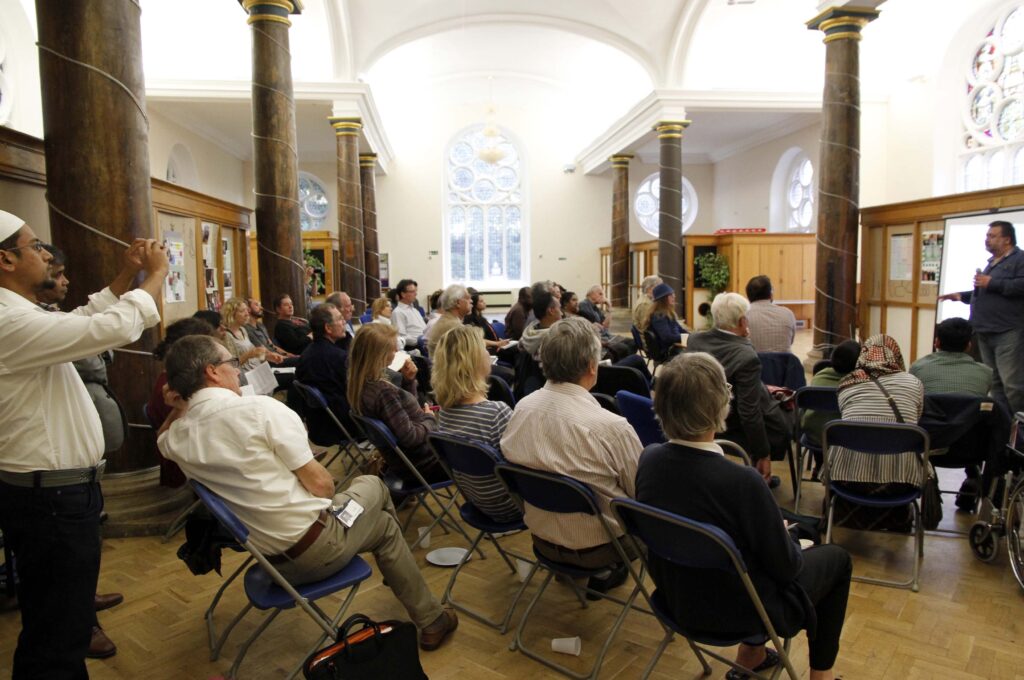
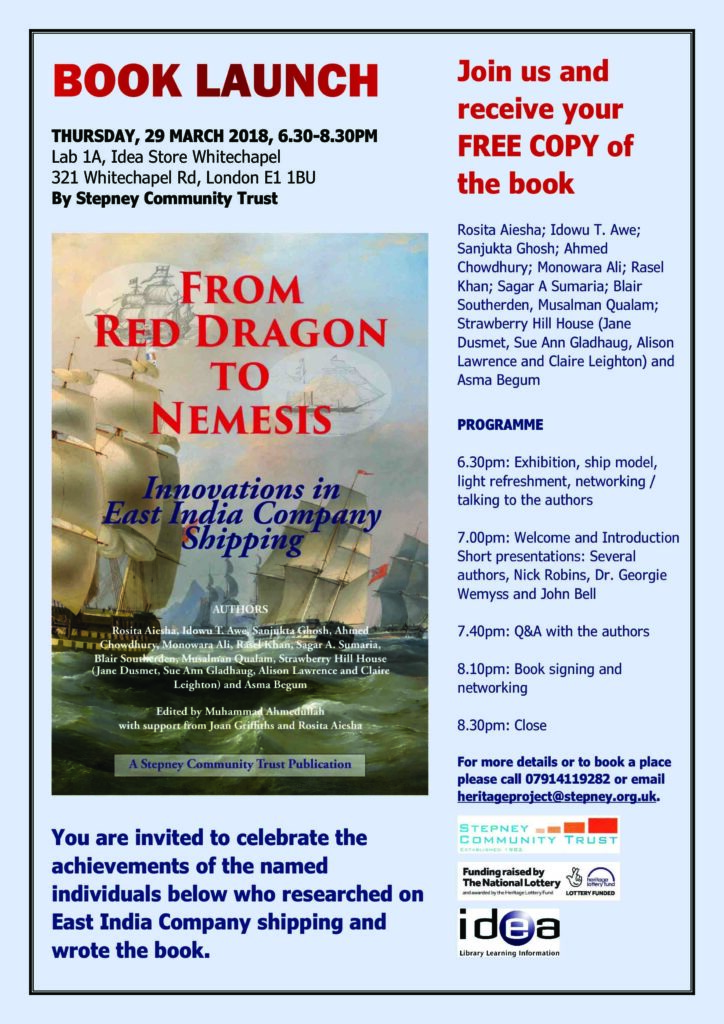
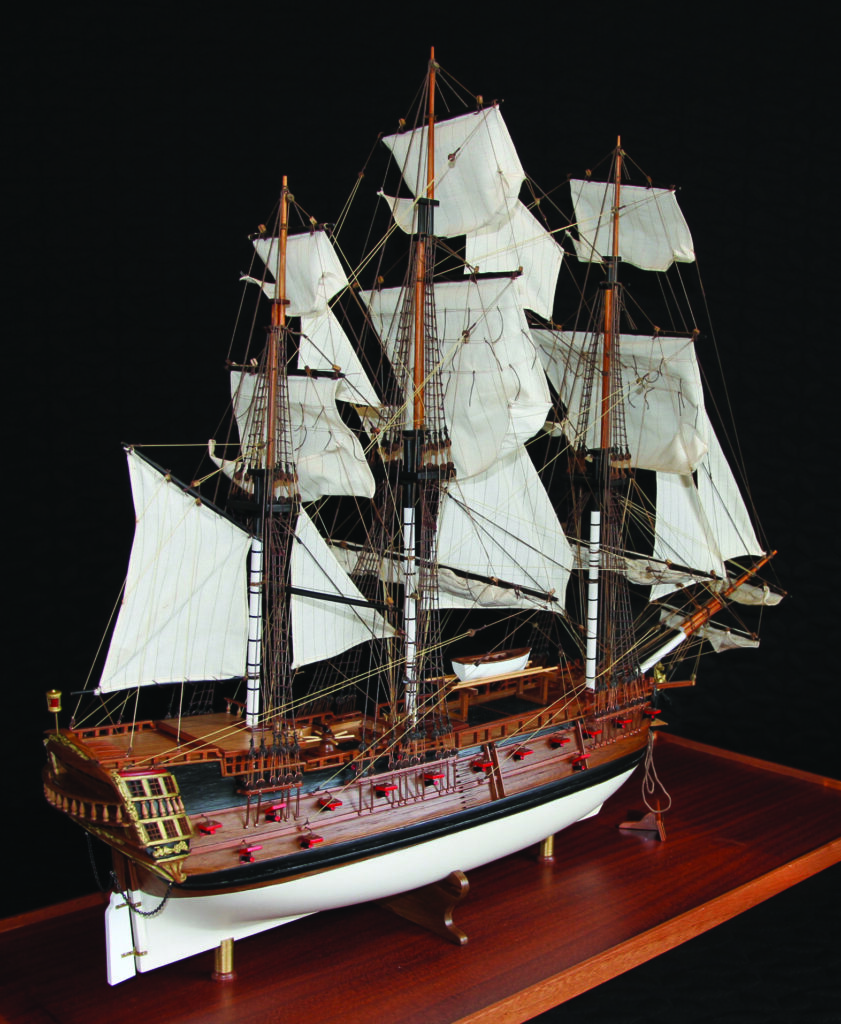
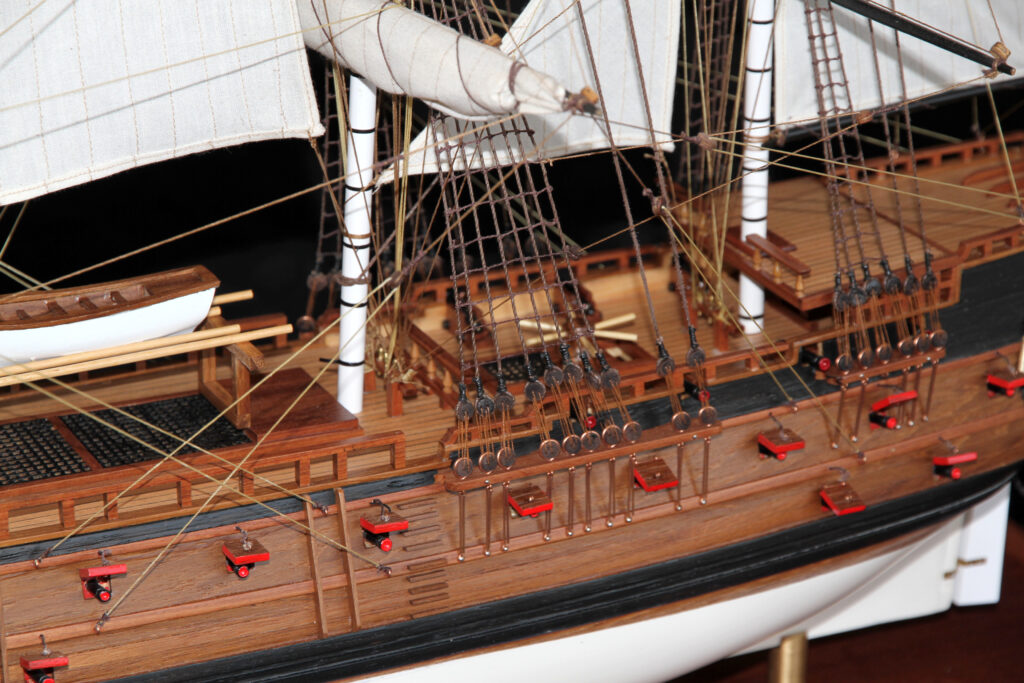
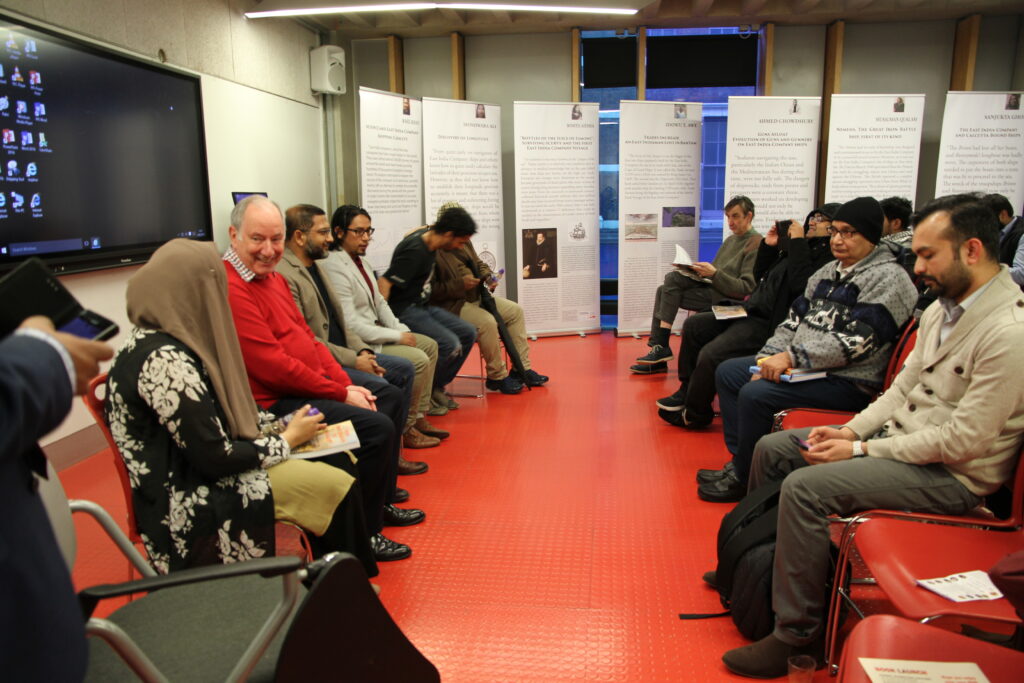
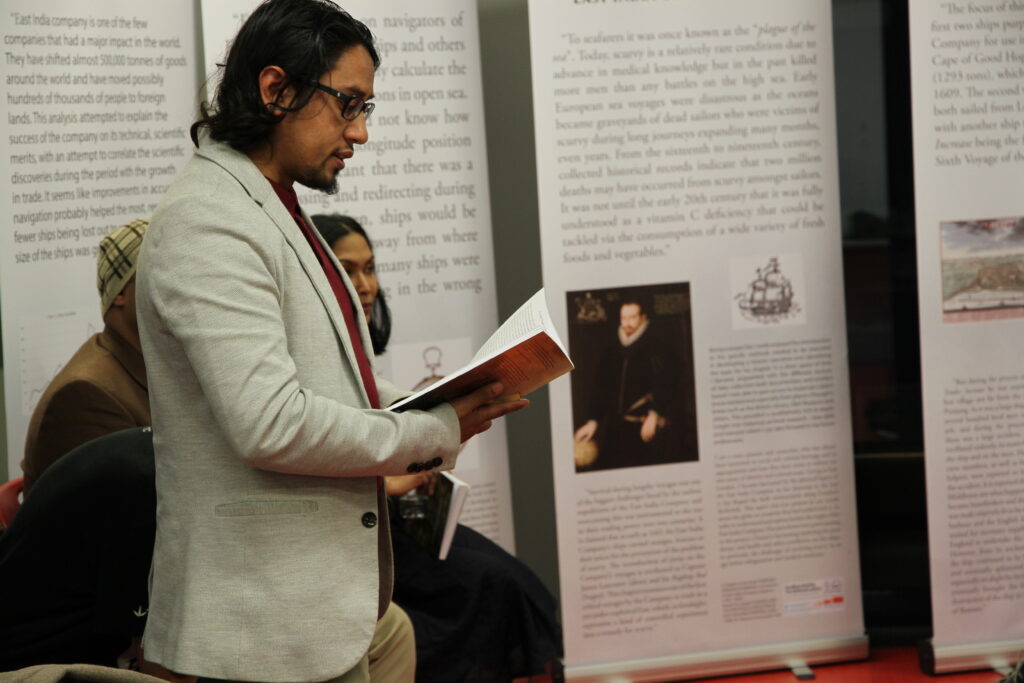
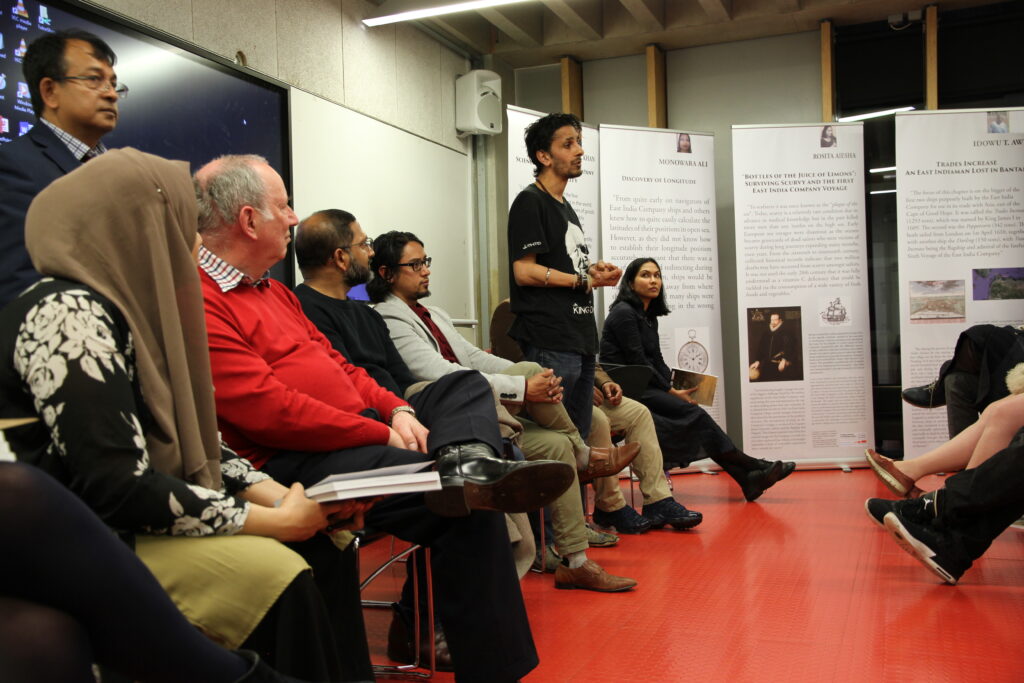
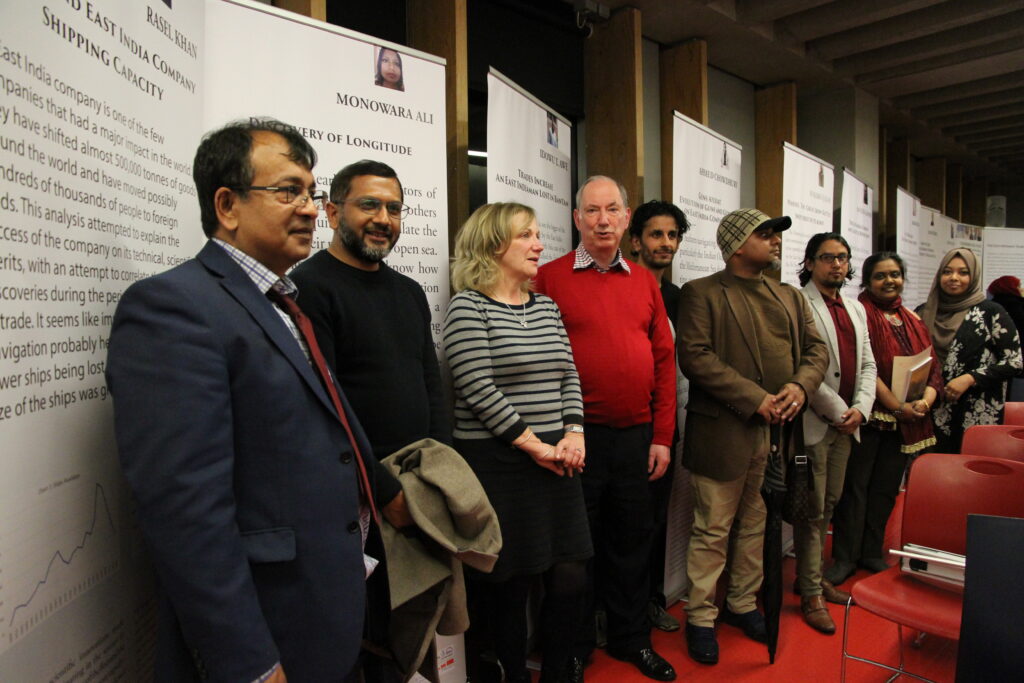
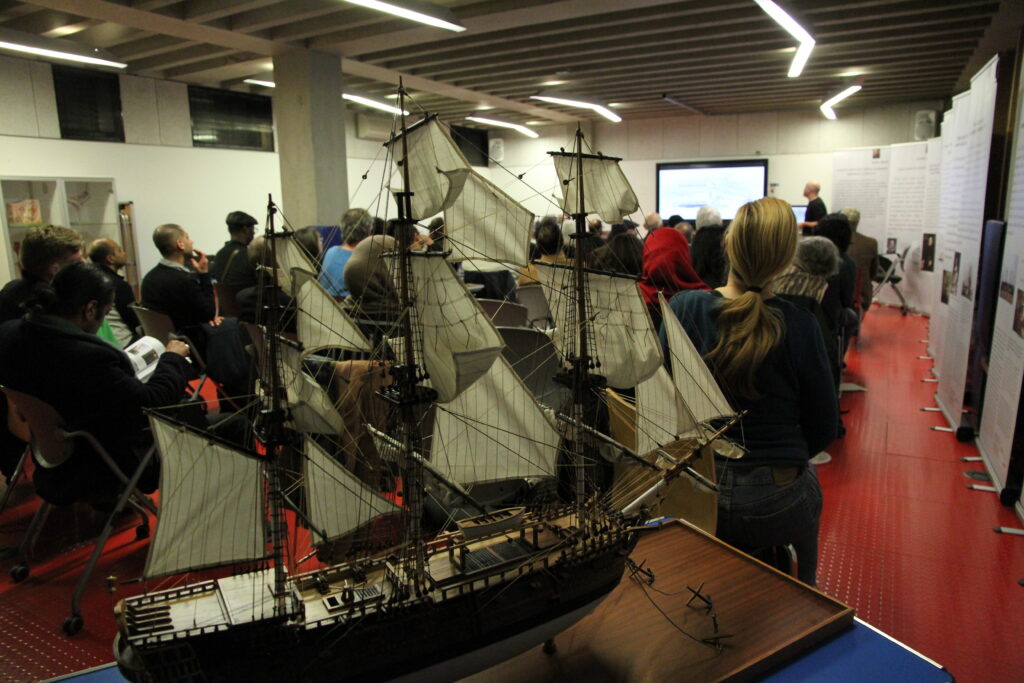
A book launch was held by Stepney Community Trust on Thursday 29 March 2018 at the Idea Store Whitechapel, London.
This book is the outcome of an ambitious community project run by the Stepney Community Trust, which looked at how, during the 250 years of the existence of the English East India Company, scientific discoveries and innovations in shipping technology enabled its voluminous and complex trading operations involving vast distances across the sea between Britain and Asia and inter-Asia. The first one hundred and fifty years of the East India Company’s focus was primarily on trade, but from 1757 with the Battle of Plassey a new phase of conquest began, which eventually saw the control of the whole of India that we know today and beyond, including parts of Malaya, Burma and Hong Kong. The Company was closed down in the aftermath of its disastrous handling of the Indian Mutiny – the First War of Independence in 1857/8.
This project is the continuation of an attempt to achieve a better understanding of the processes and mechanisms through which London’s diverse communities of today are connected historically, and how they ended up in this country. The theme of the project emerged out of the work undertaken during a previous project, run by the Stepney Community Trust, entitled “Bengal to Britain: Re-creating Historic Fashions of the Muslin Trade”. It involved the recreation of dresses worn by London ladies in the 17th, 18th and early 19th centuries, made with materials that were imported from Bengal by the English East India Company. This new project, which focusses on East India Company shipping, was designed to help make sense of how it was possible for the English to go all the way to Asia and back and travel vast distances, using mostly the power of the winds before the development of steam power around two centuries later. At first, this began with trade, but the English ventures into Asian waters eventually culminated in the colonial conquest of large tracts of foreign lands and peoples for Britain, which helped to establish the very powerful British Empire, the largest empire in human history.
Both projects involved recruiting enthusiastic volunteer participants from London’s diverse communities and supporting each of them to explore an of interest. In the case of the first project, it was the recreation of historical garments using similar designs, machinery and processes that would have been used by the East India Company in the past. At the end of the project, twelve participants produced twenty-three garment items based on research, visiting heritage institutions (the Museum of London, National Maritime Museum and the British Library); with fashion design training by the London College of Fashion and mentoring support. The project culminated in the production of a book, which was launched at the National Maritime Museum in September 2013.
In the second case, the project behind this book, the participants were required to choose an area involving East India Company shipping and explore some aspects of the innovations involved and, if possible, link the innovation to scientific discoveries of the time or before the innovation. The project was launched at a well-attended event held at the Old Matthias Community Centre in June 2015. Subsequently, a total of twenty-one applications were received from people wanting to participate in the project.
Those who joined the project came from a diverse range of backgrounds, and there was no prior expectation of knowledge in the subject apart from a keen interest in the historical narratives underlining the project. As the project progressed a few participants withdrew as their personal circumstances changed, and they could no longer dedicate the necessary time and energy towards the project. Conversely, several additional participants, who were not part of the original intake, joined and contributed within the duration of the project.
The participants covered a very vast range of subject areas, which can be seen from the titles of their chapters. “Bottles of the Juice of Limons”: Surviving Scurvy and the first East India Company Voyage; Trades Increase: an East Indiaman lost in Bantam; The East India Company and Calcutta Bound Ships; East India Company Ships Firepower; Discovery of Longitude; Correlation between Scientific Discoveries and Innovations in ships; HMS Victory and the use of Hemp in the East India Company Ships; East Indiaman Falmouth; From Sail to Steam; Nemesis: The Great Iron Battle Ship, first of its kind; Transporting and Protecting Luxury Goods by the East India Company in the Long Eighteenth Century; Tea Trade and East India Company Ships.
This book represents the outcomes of a community project rather than an academic piece of work. It is the culmination of research undertaken by a diverse range of individuals from London’s diverse communities, with different backgrounds and abilities, and very little previous involvement with such a complex subject of exploring innovations in East India Company shipping and the science behind changes and improvements achieved. Ultimately, this book is the result of how each of the fifteen participants looked at the subject matter of their choice, what they discovered and what conclusions they reached.
The Project Details
The project involved taking the volunteer participants on a visit to the British Library to learn how to access and study the archives of the East India Company kept at that institution. They also received workshops at the National Maritime Museum, including a guided visit to its Traders Gallery. There, they learnt more about East India Company ships and how to access materials in the Caird Library at the Museum. The group also enjoyed a visit to the National Maritime Museum ship model store at the No.1 Smithery, Chatham Historic Dockyard, to look at models of old sailing ships. Following this induction process, the participants were encouraged to choose a subject area for further research and later written chapters for this book.
British Library visit, 20th October 2015
One central aspect of the project was the production of an East India Company sailing ship model. Participants considered various ships for the production of a replica model. However, this was challenged by the fact that only two plans of East India Company ships were found to exist at the National Maritime Museum collection. Although a concerted effort was made to find other plans elsewhere, the project could not locate any others. There are many plans of East India Company ships that were converted into Royal Navy ships, but the group felt that it would not be appropriate to produce a model of a ship converted for Royal Navy use.
The two plans of East India Company ships that were found are: the Falmouth, 499 tons with twenty-six guns (1752-1766); and the Farquharson, 1326 tons (1820-1832). As the Farquharson was not a typical East Indiaman that sailed during most of the lifetime of the East India Company, the group decided that the Falmouth would be a better candidate for the model-making. Besides, the Falmouth was a ship of the era of the Battle of Plassey when the British started to become the rulers of India, and closely resembled many ships of the period, including some of those that were sent as part of the expedition to retake Calcutta under the leadership of Robert Clive that culminated in the 1757 conquest of Bengal, which consisted of Bengal, Bihar and Orissa. They were: the Protector, the Walpole and the Marlborough, in addition to the four Royal Navy ships.
The ship Falmouth had also visited most of the ports in Asia, including India, South East Asia and the Far East, before being destroyed when it ran aground on the banks of Sagar Island in 1766, not far from Calcutta.
Premier Ship Model was commissioned to undertake the task of producing the model of the Falmouth (below), which is part of a touring exhibition of the project.
Acknowledgement
Many
individuals, and some of the institutions to which they belong provided a range of support and expertise to the project, without which it would not have been possible to develop and deliver such a unique initiative to a successful conclusion.
The following individuals provided the initial letters of support on behalf of their institutions during the development phase of the project: Penny Brook (Lead Curator, India Office Records, British Library), Katherine McAlpine (Public Engagement Officer: Ships, Clocks & Stars, National Maritime Museum), Oliver Carruthers (Head of Programming, Rich Mix Centre), Sister Christine Frost (Head of St Matthias Community Centre); Claire Leighton (Community Development Manager, Strawberry Hill House), Rosemary Crill (Senior Curator, Asia Department, Victoria and Albert Museum).
Simon Stephens (Curator of Ship Model and Boat Collections, National Maritime Museum) made a presentation at the project launch on 15 June 2015, providing details of some of the relevant resources available at the National Maritime Museum. Tracey Weller (Archive Learning Officer) and Richard Dunn (Curator of Ships, Clocks and Stars) – National Maritime Museum – provided presentations, guided tours and training on archival research. Nick Ball (Assistant Curator of Ship Models, National Maritime Museum) provided a guided tour of the National Maritime Museum ship model store at the No.1 Smithery, Chatham Historic Dockyard.
Special thanks go to the participants who joined the project and worked very hard to research and write up their findings. Of those who joined, the following individuals submitted chapters for inclusion in this publication: Rosita Aiesha; Idowu T. Awe; Sanjukta Ghosh; Ahmed Chowdhury; Monowara Ali; Rasel Khan; Sagar A Sumaria; Blair Southerden, Musalman Qualam; Strawberry Hill House; Asma Begum and Muhammad Ahmedullah.
Stepney Community Trust is immensely grateful to the Heritage Lottery Funding for awarding a grant to finance this project.
Finally, the enthusiasm of the Stepney Community Trust Management Committee and Trustees towards the initiative was key to the success of the project. Under the leadership of Bodrul Alom, the entire management committee took a continuous and active interest in the project since its inception in 2015. They are Muktar Hussain, Abdul Malik, Hafiz Ahmed Hasan, Rukshana Khanam, Mohammed Enam Uddin, Abdur Rahim, Abdul Khalam Ali, Kamal Uddin Ahmed, Abdul Sattar Ali, Nornahar Ahmad and Sheila Rahman.
If you would like to obtain a copy of the book please make a request by email to [email protected]. The book is completely free, which you can pick up, by prior arrangement, from Stepney Community Trust’s office at 46 Myrdle Street, London E1 1HL. There is a postage and administrative charge to receive a copy by post. Details will be provided when you email the Trust.
